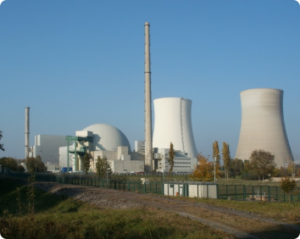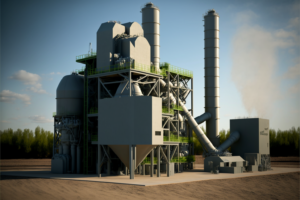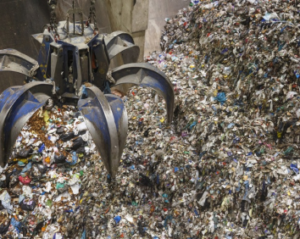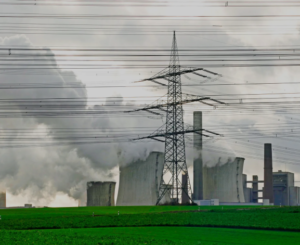Introduction.
Waste-to-Energy (WtE) and Sustainable Development; two ideas that are strongly linked in today’s world. Waste-to-energy, known as WtE, exhibits the interconnection between sustainable development and community empowerment. Premised on the concept that waste management is a key element of sustainable development, WtE seeks to improve upon current practices while maintaining the principles of sustainability. In particular, WtE adds new dimensions to the well-established gains of waste management by connecting it to pressing social needs like education and clean water access, two requirements for achieving sustainable development.
Empowering communities is a worthwhile goal, but what does this mean? Empowerment is about giving someone or something the power to act . In this case, waste management and sustainable development practices are made possible thanks to advancements made through waste-to-energy (WtE).
Waste-to-Energy (WtE) is a broad term used to describe the process of generating energy for industrial applications, electricity, and/or heating from what would have otherwise been considered waste materials. This process therefore has immense potential to address growing concerns about global climate change and environmental degradation. This blog will explore the role of WtE in sustainable development and how it can be a tool for empowering communities to manage their own waste.
The Need for Sustainable Waste Management and its Social Impact
Waste-to-Energy or WtE is a technology that converts solid waste into thermal, electrical, and/or mechanical energy. It is one of the sustainable development solutions that can combat the growing problem of solid waste management in modern communities. Although WtE has been implemented for a long time, it has recently gained more attention due to its potential in solving many of the world’s problems related to growing population and increasing demand for resources.
Around the world, experts have been identifying the importance of optimizing the use of energy generated by burning waste due to a growing need for cleaner forms of energy. By using waste as a renewable energy source, communities can eliminate about 1/3 of their waste and generate 2/3 units of clean energy. This produces environmental and social benefits that can make a difference in people’s lives today.
This procedure implements a systematic approach to manage the waste we produce on a daily basis. The process primarily involves cooling the waste to remove steam and then burning the remaining waste in an incinerator to generate heat energy. Despite significant progress in WtE technologies, significant barriers still exist that limit its adoption and implementation on a large scale at a municipal level. These barriers include improper waste management systems, low diversity and high costs of fuels, and active resistance to change by stakeholders.
Our world is facing numerous challenges ranging from environmental degradation to health issues associated with improper waste management practices. In the United States alone, there are over 3.5 million tons of waste produced each day. It is estimated that the US generates approximately 250 million tons of waste each year. A sustainable world is one that meets the needs of the present without compromising the needs of the future.
Waste-to-Energy as a Community Empowerment Tool
As a Community Empowerment Tool Waste-to-energy (WtE) has been widely used in industrialized countries to recycle the solid waste from households, commercial and industrial sources. By treating the wide range of solid wastes that pose environmental problems, WtE systems provide an effective and environmental strategy for sustainable development.
It represents a solution for managing municipal solid waste that is sustainable, efficient and environmentally friendly in the context of a circular economy (CE). It aims to reduce the amount of waste sent to landfills, turning residual waste into usable energy. The concept of establishing a corporate stakeholder relationship with communities that are responsible for managing their wastes offers potential opportunities for local involvement and ownership in WtE initiatives in such regions.
Connecting the concept of waste-to-energy with the idea of empowering communities brings us to examine a new framework for sustainable development. Waste management has become an integral part of public health and environmental sustainability programs worldwide, and it continues to gain momentum in most progressive countries of the world. While solid waste management is generally regarded as a significant opportunity, its realization has often proven difficult.
Managing society’s solid waste has always been a complex issue since many solid wastes are considered hazardous or toxic to humans, animals, plants, and the environment. This is especially true in developing countries where solid waste management has not received priority attention at any level of government. Human beings are directly exposed to waste materials through their everyday life activities such as refuse dumping and physical contact with environmental contaminants.
Environmental Benefits of Community-Based Waste-to-Energy Projects
In the United States and around the world, community-based waste-to-energy projects are helping to create sustainable waste management systems that benefit communities and the environment. These projects offer a variety of environmental benefits including:
Reducing greenhouse gas emissions and landfill usage at the local level
Waste-to-energy projects can significantly reduce greenhouse gas (GHG) emissions by replacing fossil fuels with renewable energy sources. GHGs from WtE facilities are typically offset by the amount of carbon dioxide absorbed by trees planted on surrounding land. In addition to reducing GHG emissions at the local level, WtE facilities produce electricity as a byproduct of their operations that can be used by nearby homes and businesses.
Waste-to-energy facilities use controlled combustion technologies to convert municipal solid waste into electricity and heat. Through this process, they reduce greenhouse gas emissions by diverting waste from landfills and incinerators. In addition, waste-to-energy facilities divert approximately 75% of their feedstock from landfills. This diversion reduces methane emissions that would otherwise occur if these materials were disposed of in landfills.
Air and water quality enhancement through controlled WtE processes
The combustion process used by most WtE plants produces high quality heat energy in addition to electricity which can be used for industrial applications such as space heating or steam production. The heat produced by these facilities can also be used for district heating systems that provide low carbon heating options for nearby buildings or neighborhoods.
The sustainable development benefits of waste-to-energy projects have been long recognized. Waste-to-energy plants can offer a range of environmental benefits, including reduced greenhouse gas emissions and landfill usage at the local level, enhanced air and water quality through controlled WtE processes, and fostering a circular economy mindset and resource recovery in communities.
Controlled combustion processes used for waste conversion provide an efficient way to destroy hazardous materials such as plastics, oils and tires without releasing them into the atmosphere through burning or open dumping practices. Controlled combustion also reduces odors associated with uncontrolled burning practices such as open burning or burning in piles next to open pits rather than in enclosed chambers that limit
The need to fostering circular economy mindset and resource recovery in communities.
Waste-to-energy (WtE) projects are a key component of sustainable development and resource recovery in communities. They reduce greenhouse gas emissions, landfill usage and reliance on fossil fuels, while supporting local job creation, economic growth and enhanced air quality.
Conclusion
A sustainable economy is possible with waste to energy if only we can implement the right system. This is a technology that is absolutely vital in solving a wide variety of world’s problems. The sustainable development of such solutions can combat the growing problem of solid waste disposal in modern communities with proper management at the helm.






Recent Comments